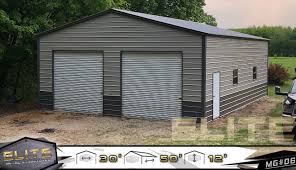1. Do Plan Your Kitchen Layout Carefully
When you decide to remodel your kitchen, the first step is to plan your layout. The layout is how your kitchen will be organized, where the stove, fridge, sink, and other important parts will go. Imagine your kitchen as a puzzle, and each piece needs to fit perfectly to make it work smoothly.
Start by thinking about the things you use the most in your kitchen. The stove, sink, and fridge should be close to each other because these are the places where most of the action happens. This setup is called the “kitchen work triangle,” and it helps you move around easily while cooking.
Make sure you have enough counter space for preparing food. Think about where you want to chop vegetables, mix ingredients, or roll out dough. Also, plan for enough storage space. You’ll need cabinets and shelves to keep your pots, pans, dishes, and groceries. Imagine reaching up to get a bowl, and it’s right where you need it!
Don’t forget about lighting. Good lighting is important because it helps you see what you’re doing, especially when cooking or cleaning. Plan to have lights above the counters, over the stove, and maybe even under the cabinets.
Remember, planning your kitchen layout carefully helps you avoid problems later. It’s like drawing a map before you go on an adventure. It makes sure you know where you’re going and helps you enjoy the journey!
2. Don’t Forget About Budgeting
Remodeling a kitchen can be expensive, so it’s super important to think about your budget. A budget is a plan for how much money you can spend. Without a budget, you might run out of money before your kitchen is finished, and nobody wants that!
Start by making a list of all the things you want to change or add to your kitchen. This could be new cabinets, a shiny new stove, or even fancy tiles for the floor. Then, find out how much each thing costs. Add up all the costs to see if it fits into the amount of money you have saved up.
It’s smart to set aside some extra money, called a “contingency fund,” just in case something unexpected happens. Sometimes, when you start remodeling, you might find problems that need to be fixed, like a leaky pipe or old wiring. Having a little extra money saved up helps you deal with these surprises without worrying.
When you plan your budget, think about what’s most important to you. Maybe you really want a cool new fridge, but you can save money by choosing less expensive cabinets. Or perhaps you’d prefer to splurge on beautiful countertops and save on the flooring. It’s all about balancing what you want with what you can afford.
Sticking to your budget is like following a recipe. It helps you make sure you have all the right ingredients for a successful kitchen remodel without spending too much!
3. Do Choose Quality Materials
When remodeling your kitchen, it’s important to choose materials that will last a long time. Quality materials might cost a bit more, but they are worth it because they will make your kitchen look great and work well for many years.
Think about the countertops, cabinets, and flooring. These are parts of your kitchen that you use every day, so they need to be strong and durable. For example, granite or quartz countertops are popular because they are tough and can resist scratches and stains. Solid wood or high-quality plywood cabinets are also good choices because they can handle the wear and tear of daily use.
Flooring is another important material to consider. The kitchen floor gets a lot of traffic, and it might get wet sometimes, so you need something that’s easy to clean and won’t get damaged by water. Tile, vinyl, or hardwood floors are all great options because they are strong and can look beautiful for a long time.
Don’t forget about the hardware, like knobs and handles for your cabinets. Choose ones that are sturdy and comfortable to use. You’ll be opening and closing those cabinets a lot, so you want them to be easy to grip and long-lasting.
By choosing quality materials, you make sure your kitchen stays beautiful and functional for a long time. It’s like building a strong house with solid bricks instead of flimsy ones. It might cost a little more now, but it saves you money and headaches in the future!
4. Don’t Overlook the Importance of Ventilation
Good ventilation in the kitchen is like having fresh air whenever you need it. When you cook, especially if you’re frying or baking something, it can create smoke, steam, and smells that need to be cleared out. Without proper ventilation, your kitchen can get stuffy, and the smells might spread all over the house.
A range hood is a great tool for ventilation. It’s the fan that sits above your stove and helps suck up the smoke, steam, and odors, sending them outside or filtering them. When choosing a range hood, make sure it’s strong enough for your kitchen. It should cover the whole stove area and be able to move a lot of air quickly.
If you can’t install a range hood, you can use other options like exhaust fans or even open windows while cooking. These methods help keep the air in your kitchen fresh and clean.
Proper ventilation isn’t just about comfort; it’s also about safety. Cooking can sometimes produce harmful fumes or increase the risk of fire, especially with gas stoves. Good ventilation helps reduce these risks, making your kitchen a safer place.
Think of ventilation as giving your kitchen a breath of fresh air. It makes cooking more enjoyable and keeps your kitchen environment healthy for everyone.
5. Do Consider Energy Efficiency
Making your kitchen energy-efficient is a smart way to save money and help the environment. Energy-efficient appliances and lighting use less electricity and water, which means lower bills and a smaller carbon footprint.
Start by choosing energy-efficient appliances like refrigerators, dishwashers, and stoves. Look for the Energy Star label, which means the appliance meets certain energy-saving standards. These appliances are designed to use less power without sacrificing performance. For example, an Energy Star fridge will keep your food cold while using less electricity.
Lighting is another area where you can save energy. LED bulbs are a great choice because they use less power and last a lot longer than traditional bulbs. You can also install dimmer switches, which let you control how bright your lights are. Sometimes, you don’t need full brightness, so dimming the lights can save even more energy.
Think about water usage too. Choose a low-flow faucet for your sink, which reduces the amount of water you use without affecting the water pressure. This helps you save water while washing dishes or preparing food.
By making your kitchen energy-efficient, you’re not only saving money but also doing something good for the planet. It’s like planting a tree – a small action that makes a big difference over time.
6. Don’t Rush the Remodeling Process
Remodeling your kitchen is a big project, and it’s important to take your time. Rushing through the process can lead to mistakes, and you might end up with a kitchen that doesn’t meet your needs or expectations.
Start by setting a realistic timeline. Remodeling takes time, especially if you’re doing major changes like replacing cabinets, countertops, or floors. It’s better to plan for more time than to try and squeeze everything into a short period. This way, you won’t feel stressed, and you can make sure everything is done right.
Take your time choosing materials, appliances, and colors. Don’t rush into decisions just to get the project done faster. It’s important to pick things you really like and that will work well in your kitchen. For example, if you’re unsure about a color for the cabinets, take some time to look at samples and imagine how they will look in your space.
Also, make sure to double-check all the measurements before you order materials or start installing things. A small mistake in measurements can cause big problems later on. It’s better to measure twice and cut once!
Remember, remodeling is a chance to create your dream kitchen. Taking your time ensures you get the kitchen you really want, without regrets. It’s like baking a cake – you don’t want to rush, or it might not turn out right. Patience and care will give you the best results!



